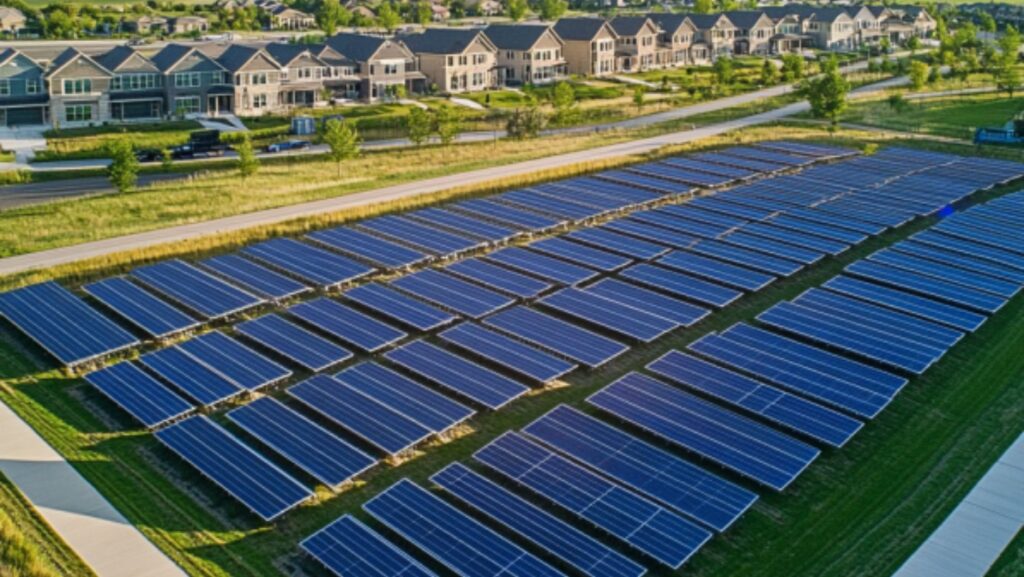
As sustainable living gains momentum, homeowners are increasingly looking towards eco-friendly solutions for powering their homes. One of the most innovative shifts in the renewable energy landscape has been community solar installations. This concept enables multiple households to reap the benefits of solar energy without the need for individual roof installations. It provides a practical solution for people willing to go green but facing physical and financial constraints with traditional solar setups.
Community solar allows participants to embrace clean energy while experiencing its benefits firsthand. But how does this new approach work, and what’s making it so powerful?
What is Community Solar?
Community solar energy involves investment by several families or individuals in one larger solar array, usually offsite. Instead of placing solar panels on each home’s rooftop, participants “subscribe” to a portion of a centralized solar installation and receive credits on their utility bills based on how much energy their share generates.
- Why it works: Community solar provides a hassle-free and affordable way for those with shaded roofs, property restrictions, or an inability to invest in the upfront cost of private solar installations to tap into renewable energy without the physical and financial burden.
The benefits of community solar range from cost reduction to democratization of access to renewable energy.
- Accessibility: Homeowners who cannot install panels due to roof conditions or rental restrictions gain access to solar energy.
- Cost-Efficiency: Community solar projects are more affordable, as installation and maintenance costs are divided among participants. This contrasts with the traditional setup of individual solar panels.
- Environmentally Friendly: By participating in community solar, households reduce their carbon footprint, increase the use of clean energy, and lessen reliance on fossil fuels.
How Does It Work?
By subscribing to a community solar program, you own or lease a portion of the energy production of a solar farm. As the solar farm generates electricity, your share is credited to your utility bill, offsetting the amount of energy you need to purchase from the grid.
- Example: If you live in a city apartment where rooftop solar is not an option, community solar programs allow you to subscribe to a shared solar farm. This enables you to receive credits for the electricity your portion generates, reducing your overall monthly bill while supporting green energy.
Solar Installation’s Role in Increasing Access
Community solar systems thrive when sited in open, sunny areas like empty lots or commercial rooftops. These shared facilities maximize sunlight exposure and achieve high energy output, making solar energy more accessible to a wider audience.
- Community Impact: Shared solar installations can help provide clean energy to low-income neighborhoods, schools, and other community areas, promoting broader use of sustainable energy. For example, Hawaii solar companies have started providing financing and installation of solar panels for schools, businesses, and other establishments to improve community impact in this state.
What’s Next for Solar?
In the coming years, community solar projects are expected to expand as more governments and utility companies recognize the importance of transitioning to renewable energy.
This will give more households the opportunity to participate in solar power. As solar installation technologies continue to develop, systems will become even more efficient and accessible.
Conclusion: The Energy Revolution at Your Doorstep
Community solar is a practical solution for households that don’t have the option of rooftop solar. It is one of the most pivotal developments in how people think about energy. Shared solar installations allow homeowners to enjoy the benefits of renewable energy while contributing to a more sustainable future. Whether you live in a house, apartment, or rental property, community solar offers a flexible and forward-thinking way to go green.
For more information on sustainable living and innovative energy solutions, visit Decorator Advice as we explore the hottest trends in eco-friendly design and home improvement.














